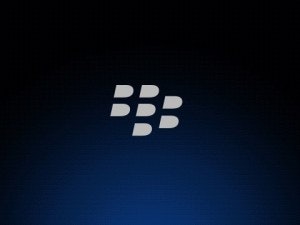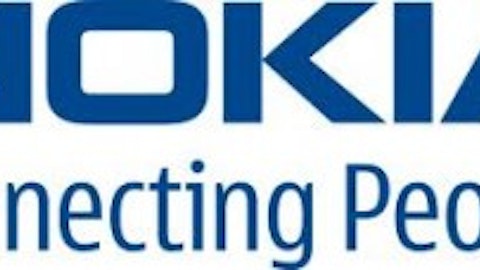
The Q5 is a low-cost version of the BlackBerry Q10 with BlackBerry 10 functionality and a QWERTY keyboard that resembles older BlackBerry Bold and Curve models. The phone comes with a 3.1-inch 720×720 LCD display with 8 GB of internal memory, a 1.2 GHz dual-core processor, and a 5-megapixel camera.
Thorsten Heins, Research In Motion Ltd (NASDAQ:BBRY)’s President and CEO, stated that the Q5 will launch in selected markets in Latin America, Europe, Middle East, and Asia (including the Asia Pacific region) in the beginning of July.
Research In Motion Ltd (NASDAQ:BBRY) has an opportunity to penetrate developing markets filled with consumers wanting to purchase a smartphone, but who do not want to pay the premium price. The ideal price for a phone in North America conflicts the price acceptance in emerging markets where consumers have less disposable income.
Entering emerging markets will help advertise the Research In Motion Ltd (NASDAQ:BBRY) brand and BlackBerry 10 ecosystem across different pricing segments — sustaining revenue growth, subscriber base, and market share in select markets.
If Research In Motion Ltd (NASDAQ:BBRY) wants to see growth, the company needs to attract new customers to the BlackBerry platform, says Charles Golvin, an analyst from Forrester Research.
“If all they’re doing is using the Q5 to retain existing loyal Research In Motion Ltd (NASDAQ:BBRY) customers that’s good — they’re holding the line on market share — but they’re not going to grow.”
Heins did not reveal pricing for the Q5 model. Price is a key figure that will measure the phone’s affordability and profitability in emerging markets against low to mid-range mobile devices. Research In Motion Ltd (NASDAQ:BBRY) needs to establish a price that will yield strong gross profit margins and lure new consumers. The success of the BlackBerry Q5 depends on the price.
Competition in the emerging markets
For years, Research In Motion Ltd (NASDAQ:BBRY) performed well in the emerging markets with its low-cost BlackBerry Curve running on the BlackBerry 7 platform, but it has lost traction in some markets. After analyzing and comparing the company’s revenue breakdown from fiscal 2012-2013, Research In Motion Ltd (NASDAQ:BBRY) gained share in Latin America but remained flat in other select markets. Latin America, with a 19.1% share of its revenue, increased from 14.4%. Europe, Middle East, and Africa earned 40.7% of its revenue, down from 41.6%, while the Asia Pacific region accounted for 14% of its revenue, down 0.5% from the previous year.
Research In Motion Ltd (NASDAQ:BBRY)’s momentum in select markets has slowed down because of Samsung, Nokia Corporation (ADR) (NYSE:NOK), and Chinese handset manufacturers such as Huawei and ZTE that offer cheaper Android and Windows Phone 8 devices. Over the past few years, Nokia Corporation (ADR) (NYSE:NOK) has established itself in the emerging markets for mobile growth. The Finnish company has penetrated the emerging markets, working effectively with Microsoft to deliver Windows Phones, such as its Lumia product line, at lower price points.
Nokia recently unveiled its new Asha 501 phone at a launch event in India. With similar ambitions as Research In Motion Ltd (NASDAQ:BBRY), Nokia Corporation (ADR) (NYSE:NOK) seeks to retain its market leadership in select markets such as India, where the company faces growing competition from Samsung and Indian handset manufacturers Lava, Micromax, and Karbonn. Nokia leads mobile phone sales in India with 21.8% market share, followed by Samsung and Micromax with 11.5% and 6.5% shares, respectively. The Nokia Asha 501 is priced at $99 and will hit retail stores in June.
The largest threat to Research In Motion Ltd (NASDAQ:BBRY) and Nokia Corporation (ADR) (NYSE:NOK) in the low and high-end pricing segment are devices running on Google Inc (NASDAQ:GOOG)‘s Android operating system — most notably Samsung’s line Galaxy phones. Figures released by market research firm International Data Corp. show that Android captured 75% market share with 162.1 million smartphone shipments in the first quarter of 2013, up 45% from a year ago. Samsung owns 41.1% share of Android shipments, while other vendors trail behind in single-digits and less. With the new HTC One and Samsung Galaxy S4 handsets, Android’s dominance should continue.
Apple’s iOS accounted for 17.3% market share with 37.4 million smartphone shipments followed by Windows Phone at 3.2% (7 million shipments) and BlackBerry’s OS at 2.9% (6.3 million shipments).
Nokia Corporation (ADR) (NYSE:NOK) accounted for 79% of all Windows Phone shipments during the quarter and shipped a total of 20.3 million smartphones across multiple market segments.
Research In Motion Ltd (NASDAQ:BBRY) shipped more than 1 million BlackBerry Z10 devices running on the company’s new BlackBerry 10 platform, which released in January. With the BlackBerry Q10 on sale, shipments are expected to increase in volume for the next quarter.
In summary, the emerging markets present a lucrative opportunity for BlackBerry to offer higher quality handsets at low prices. However, the market is full of competing manufacturers. If Research In Motion Ltd (NASDAQ:BBRY) announces a competitive price, the BlackBerry Q5 may provide the company the desired growth needed to remain relevant in select markets.
The article BlackBerry Faces Stiff Competition in Emerging Markets originally appeared on Fool.com.
Christopher is a member of The Motley Fool Blog Network — entries represent the personal opinion of the blogger and are not formally edited.
Copyright © 1995 – 2013 The Motley Fool, LLC. All rights reserved. The Motley Fool has a disclosure policy.


